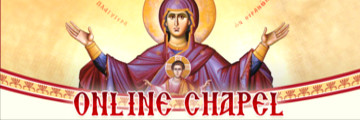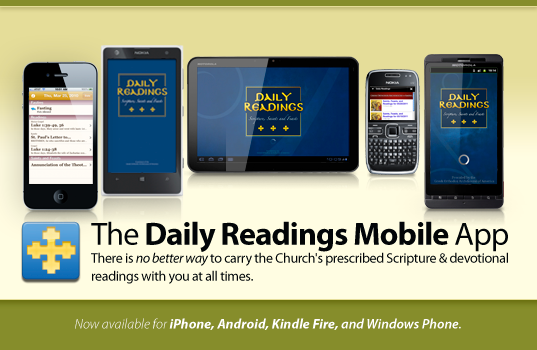
Sometimes I find myself hearing that infectious opening song –Tradition!– in the robust voice of the beloved Tevye from the 1971 play, Fiddler on the Roof. The plaintive Jewish melody fills my inner ear, punctuated by the thump of Tevye’s boots as he stomps emphatically across the ground accentuating the solidity of his hope in his Tradition,
As Orthodox Christians we are thankful to be grounded in Tradition! We feel surefooted that all is well with the world, even when it isn’t, because as the beloved Apostle declared, “Jesus is the same yesterday, today and tomorrow” and every Liturgy we intone “We have found the true faith, worshipping the undivided Trinity.”
Until… Until our children begin to depart from the Tradition we love, or fail to appreciate its deep living significance and they go searching for other gods in the culture. Or outside it. Or no gods at all!
Tevye’s struggle to love and live his Tradition in the world in the life-giving way it had offered his people for centuries, even millennia, was tested more and more. His children grow up and one by one, they married outside the faith or not in accordance with Tradition. Then war reaches his village. Suddenly his people are refugees, separated from their loved ones and their homeland,
In the twenty-first century, Europe has become increasingly secularized, leaving Christianity behind. In the U.S. over its relatively short historical life, Christianity has been weakened by undergoing theological vivisection into thousands of “denominations”, each with their own interpretation of Tradition. Some Christians, turning to historical Orthodox Christianity, hope to find solid ground and surety enough to be able to again step out like Tevye, with confidence and hope.
As the world around us becomes more and more ahistorical, our leaders trading make-believe facts and individual subjective opinions in the market place where spin, advertisements and hype are the coin of the realm, purchasing conviction without conscience as easily as buying a movie ticket, more than a few persons are seeking some kind of ground that doesn’t move under the pressure of post-modern tectonic shifts.
Seventy-five years ago, Fr. Georges Florovsky, an emigre and refugee from Soviet Russia helped call Orthodox Christians “Back to the Fathers” during a time when Western European intellectual trends had so weakened the Church that it was in danger of losing the theological bedrock that had supported it for two millennia. In part as a result of his and others such efforts to reclaim Tradition, Orthodox Christianity is enjoying something of a resurgence and growth among converts in the U.S. and in University programs around the country. The many conversions and the rise of monastic, ascetical spirituality in America that seeks to preserve the form of the Tradition, has presented some interesting challenges, along with the many benefits.
One significant challenge for the Orthodox convert is to avoid confusing living theology with a petrified ideological imprint of it that one clings to out of emotional zeal without really communing with Christ in a life-giving way. When the need for security is stronger than the willingness to encounter the unknown with hope and faith in Christ, a passion is born, hiding behind the form of religion, but without the power to transform and sanctify. Former Lutheran pastor and convert to Orthodoxy, professor Jaroslav Pelikan, captured this danger well in his pithy oft-quoted observation Tradition is the living faith of the dead; traditionalism is the dead faith of the living. He further explained,
Tradition lives in conversation with the past, while remembering where we are and when we are and that it is we who have to decide. Traditionalism supposes that nothing should ever be done for the first time, so all that is needed to solve any problem is to arrive at the supposedly unanimous testimony of this homogenized tradition. (1)
This petrification process begins to happen when, instead of realizing that Christ is in our midst in such a way that we are invited to continually encounter Him Eucharistically in and through the people and the world around us; instead of recognizing in creation’s manifold beauty, expressions of the divine joy, we abandon the world and one another to objectification and reduction to being merely “resources” for worldly production while we look for life in a world after this one. It is true that awareness of death is the mother of prayer and spiritual sobriety, and that life beyond death is the only real bedrock. Yet without having regard for our material existence as being a bearer of the divine energies which sanctify it through communion with the human heart we further divide what Christ came to heal and unify.
Orthodoxy is Incarnational. It does not sacrifice either the earth for heaven, or heaven for earth. Jesus taught his disciples to pray. “Thy will be done on earth as it is in heaven.” Christians are called to live in and through Him in Whose person there is union between the uncreated divine world and this created one. With pain of heart, sensitized by grace and compunction, in the face of the increasing depersonalization of the earth and of one another, Christians are called to follow the way of Christ’s incarnation, living as citizens of both worlds, this one and the next, simultaneously. This is the marvelous, blessed struggle to which Christians awaken as they mature.
Fr. Dumitru Staniloae, drawing on St Maximos the Confessor, points out that “the correct way to think of our relationship with creation is to consider man as a macrocosm, called to comprehend the whole world within himself as one capable of comprehending it without losing himself, for he is distinct from the world….It is the world that has been created to be humanized, not man to be assimilated into the world or nature.”(2) Staniloae calls for a dialogue between Tradition and the natural sciences that is essential for the twenty-first century when he says:
The most important problem for Orthodox theology will be to reconcile the cosmic vision of the Fathers with a vision which grows out of the results of the natural sciences… Theology today must remain open to embrace both humanity and the cosmos. (3)
Chrysostomos Stamoulis, Professor of Dogmatic theology at Aristotle University in Thessaloniki, calls for this dialogue to include aesthetics as well. The entire world can and must be rediscovered and encountered in the light of Christ. He encapsulates his approach to Tradition and contemporary culture in five words: “Straight ahead with the Fathers!” (4)
I met Dr. Stamoulis recently at a conference where he spoke of this theme. He is influenced by St Porphyrios whose Orthodox life and spirituality was characterized by mercy, joy and love for people. He himself lived much of his life in Athens, Greece, serving as the chaplain of Polyclinic hospital where he became a spiritual father to thousands around the world. Stamoulis’ warmth and interest in culture, music, and the arts as being expressive of theological themes, caught my attention. He speaks and writes as one who attempts to bridge the world of Spirit and creation in his person, his theology and in his art. (He is also a composer of contemporary music.) Here is the way a recent journalist described his work in dogmatic theology:
“The aesthetic theology of Professor Chrysostomos Stamoulis is a holistic one. For him, the distinction between the holy and the unholy, the sacred and the profane, is false. Music, poetry, theatre, film, the novel, philosophy, and science are not ‘secular’ endeavors, but attempts to give significance to the world and especially to its most critical questions about love, life, and death. The rejection of the distinction between holy and unholy applies equally to the distinction between the familiar and the strange. The stranger should be a part of my own life. He invites me to dialogue, he challenges me and he is the chance for an authentic self-knowledge. Christ is the supreme criterion for judging the ecclesiastical life. The members of the Church, in order to be authentic, must follow Christ’s paradigm. They must be open to the unfamiliar, to the wholly different one. But He is also the assumption of concrete man and reality. As a consequence, the Christian must embrace real life, as it is, without nostalgic flight towards an idealized historical past. Professing a living theology, Stamoulis urges us not to lose the beauty of the present by overloading it with the chimerical beauties of the past, or indeed of the future. His thinking is, in its way, a theological version of Carpe diem.” (5)
A summary of Professor Stamoulis’ refreshing approach to dialogue with contemporary culture and the world, seeking to be faithful to the Tradition of the Fathers and not using the form of Tradition as a means of avoiding encounters with a changing world, see the link below.
By engaging in dialogue, Christ is revealed for a new generation in ways that bless both the Church and the world. This was the pattern and purpose of the Great Ecumenical Councils whose representatives engaged in both the ascetical life of prayer and communal Liturgy as well as the blessed struggle of dialogue with love for God and humanity. Theological dogma was articulated and refined freshly in response to the challenges of times. In this way, the Church humanizes culture and sanctifies creation, for Christ alone is true Person, and the members of His Body who share His life, are the light of the world.
(1) Carey, Joseph (June 26, 1989), “Christianity as an enfolding circle [conversation with Jaroslav Pelikan]”, S. News & World Report, 106(25), p. 57.
(2) Staniloae, D. Orthodox Dogmatic Theology: The Experience of God. Brookline, MA: Holy Cross Orthodox Press, 1998, p.4.
(3) cited by Nesteruk, A. Light from the East: Theology, science, and the Eastern Orthodox Tradition. Minneapolis: Fortress Press, 2003, p. 6.
(4) Tomoioaga, F.T. “The Dialogue between Orthodox Theology and Culture: the Contemporary Paradigm of Professor Chrysostomos Stamoulis”, SOBORNOST incorporating Eastern Churches Review, Vol. 37:2 92015), pp. 47-64.
(5) Ibid



